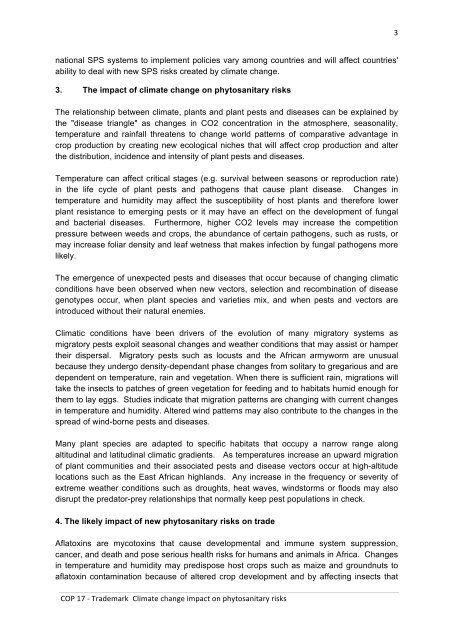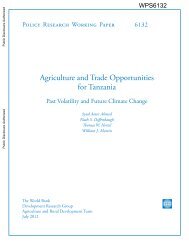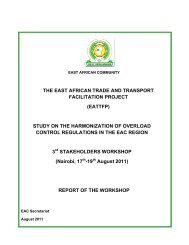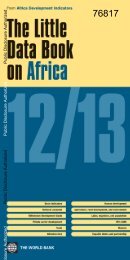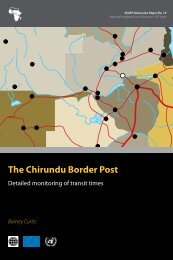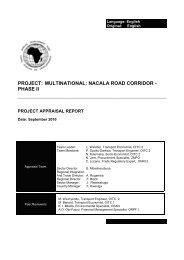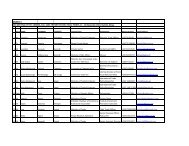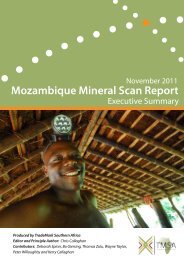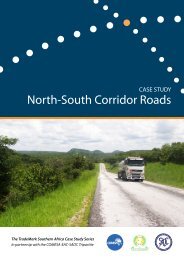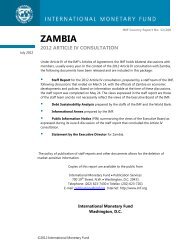Plant Health, Climate Change and Trade - TradeMark Southern Africa
Plant Health, Climate Change and Trade - TradeMark Southern Africa
Plant Health, Climate Change and Trade - TradeMark Southern Africa
You also want an ePaper? Increase the reach of your titles
YUMPU automatically turns print PDFs into web optimized ePapers that Google loves.
3 <br />
national SPS systems to implement policies vary among countries <strong>and</strong> will affect countries'<br />
ability to deal with new SPS risks created by climate change.<br />
3. The impact of climate change on phytosanitary risks<br />
The relationship between climate, plants <strong>and</strong> plant pests <strong>and</strong> diseases can be explained by<br />
the "disease triangle" as changes in CO2 concentration in the atmosphere, seasonality,<br />
temperature <strong>and</strong> rainfall threatens to change world patterns of comparative advantage in<br />
crop production by creating new ecological niches that will affect crop production <strong>and</strong> alter<br />
the distribution, incidence <strong>and</strong> intensity of plant pests <strong>and</strong> diseases.<br />
Temperature can affect critical stages (e.g. survival between seasons or reproduction rate)<br />
in the life cycle of plant pests <strong>and</strong> pathogens that cause plant disease. <strong>Change</strong>s in<br />
temperature <strong>and</strong> humidity may affect the susceptibility of host plants <strong>and</strong> therefore lower<br />
plant resistance to emerging pests or it may have an effect on the development of fungal<br />
<strong>and</strong> bacterial diseases. Furthermore, higher CO2 levels may increase the competition<br />
pressure between weeds <strong>and</strong> crops, the abundance of certain pathogens, such as rusts, or<br />
may increase foliar density <strong>and</strong> leaf wetness that makes infection by fungal pathogens more<br />
likely.<br />
The emergence of unexpected pests <strong>and</strong> diseases that occur because of changing climatic<br />
conditions have been observed when new vectors, selection <strong>and</strong> recombination of disease<br />
genotypes occur, when plant species <strong>and</strong> varieties mix, <strong>and</strong> when pests <strong>and</strong> vectors are<br />
introduced without their natural enemies.<br />
Climatic conditions have been drivers of the evolution of many migratory systems as<br />
migratory pests exploit seasonal changes <strong>and</strong> weather conditions that may assist or hamper<br />
their dispersal. Migratory pests such as locusts <strong>and</strong> the <strong>Africa</strong>n armyworm are unusual<br />
because they undergo density-dependant phase changes from solitary to gregarious <strong>and</strong> are<br />
dependent on temperature, rain <strong>and</strong> vegetation. When there is sufficient rain, migrations will<br />
take the insects to patches of green vegetation for feeding <strong>and</strong> to habitats humid enough for<br />
them to lay eggs. Studies indicate that migration patterns are changing with current changes<br />
in temperature <strong>and</strong> humidity. Altered wind patterns may also contribute to the changes in the<br />
spread of wind-borne pests <strong>and</strong> diseases.<br />
Many plant species are adapted to specific habitats that occupy a narrow range along<br />
altitudinal <strong>and</strong> latitudinal climatic gradients. As temperatures increase an upward migration<br />
of plant communities <strong>and</strong> their associated pests <strong>and</strong> disease vectors occur at high-altitude<br />
locations such as the East <strong>Africa</strong>n highl<strong>and</strong>s. Any increase in the frequency or severity of<br />
extreme weather conditions such as droughts, heat waves, windstorms or floods may also<br />
disrupt the predator-prey relationships that normally keep pest populations in check.<br />
4. The likely impact of new phytosanitary risks on trade<br />
Aflatoxins are mycotoxins that cause developmental <strong>and</strong> immune system suppression,<br />
cancer, <strong>and</strong> death <strong>and</strong> pose serious health risks for humans <strong>and</strong> animals in <strong>Africa</strong>. <strong>Change</strong>s<br />
in temperature <strong>and</strong> humidity may predispose host crops such as maize <strong>and</strong> groundnuts to<br />
aflatoxin contamination because of altered crop development <strong>and</strong> by affecting insects that<br />
COP 17 -‐ <strong>Trade</strong>mark <strong>Climate</strong> change impact on phytosanitary risks


